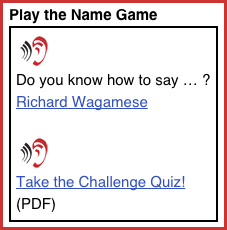This post was originally published in Nick Glass’ monthly column for Curriculum Connections, an e-newsletter published by School Library Journal in partnership with TeachingBooks.net. Subscribe to this free newsletter here.
How often do you hear substitute teachers included in discussions about education? Despite having attended dozens of reading, library, and technology conferences, I have never noticed a program or a vendor exhibit dedicated to the work of substitutes. Yet these teachers provide important classroom continuity and vital support for full-time educators.
In this post I’ve highlighted four specific literature-based activities that a substitute teacher can use to engage students—merging books, technology, and fun.
1. Watch and discuss how Denise Fleming creates her pulp painting illustrations
(This activity works for any grade level, and is recommended for homeroom, English, art, and library classes.)
Read one of Denise Fleming’s picture books to the class and ask students how the artist might have created the illustrations. Then play TeachingBooks.net’s six-minute movie, “Denise Fleming Demonstrates Pulp Painting.”
The film depicts the artist in her studio explaining each step of the process. (Note: This is the second of two movies on this Web page.)
2. Enjoy Reader’s Theater with these ready-to-use scripts based on favorite books
(This activity works for any grade level and is suggested for homeroom, English, and library classes. It requires little preparation time.)
 Select a reader’s theater script that meets your students’ interests and reading level. TeachingBooks.net’s collection offers more than 200 choices including one based on David Shannon’s A Bad Case of Stripes (Scholastic, 1998), and another on Roald Dahl’s The BFG (Knopf, 1993).
Select a reader’s theater script that meets your students’ interests and reading level. TeachingBooks.net’s collection offers more than 200 choices including one based on David Shannon’s A Bad Case of Stripes (Scholastic, 1998), and another on Roald Dahl’s The BFG (Knopf, 1993).
Assign a role to each student and enjoy the performance.
3. Stimulating conversations about books
 (This activity is recommended for grades 5 and up, in classes where students are reading fiction or nonfiction trade titles.)
(This activity is recommended for grades 5 and up, in classes where students are reading fiction or nonfiction trade titles.)
Ask students what books they are reading, then use TeachingBooks.net’s collection of book guides to locate questions and activities that they can incorporate into small- or large-group discussions.
Click here to enter a title and retrieve a corresponding book guide from TeachingBooks.net portal of vetted materials from around the Web.
4. Play the name game! How would you say these authors’ names?
(This activity works for any grade level, and is suggested for homeroom, English, and library classes.)
 Project the TeachingBooks.net “Author Name Pronunciation Guide” onto a large screen. Ask students to select authors and illustrators from the list to listen to and learn how to pronounce their names.
Project the TeachingBooks.net “Author Name Pronunciation Guide” onto a large screen. Ask students to select authors and illustrators from the list to listen to and learn how to pronounce their names.
You can also print the “Author Name Pronunciation Challenge Quiz,” a preselected list of some tricky monikers and a few relating information about the author’s heritage.
 Posted by Nick Glass, Founder & Principal of TeachingBooks.net
Posted by Nick Glass, Founder & Principal of TeachingBooks.net


Leave a Reply